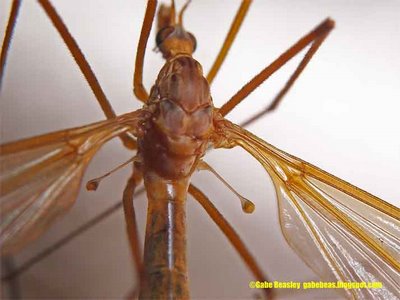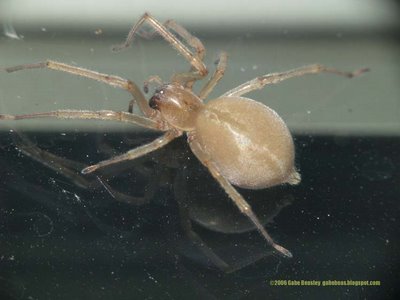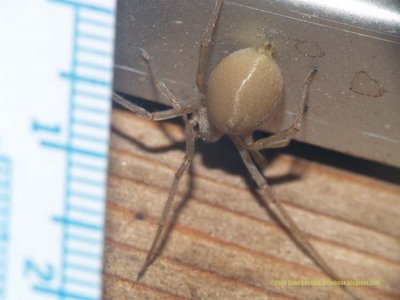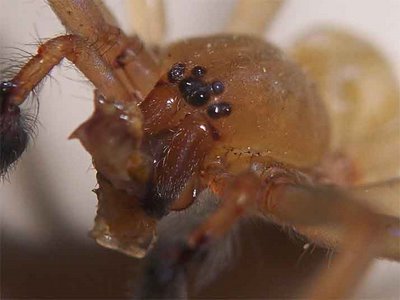
SOME NOTES FROM ME, AN AMATURE PHOTOGRAPHER
ON HOW TO SHOOT FIREWORKS
THIS PICTURE was shot at f4.8 iso200 with a slow shutter speed of only 1/8th. The reason why I did that is was to show the fireworks streaming across the sky rather then just the brightest finally which would just often look like a few bright dots and that‘s it.. Use a tripod if you want to take longer exposures that show an entire process of each firework happening all in one frame or so. If you up the shutter time however from 1/4th-1/20th, you will mostly only see what is directly in front of you. With a digital SLR at 1250iso I get good shots at f11--but you can only do that with a digital SLR. Many compacts however and even digital SLR cameras have built-in modes for fireworks. But I’ve never been a fan of automatic modes. I take 99.9% of my pictures fully or nearly-totally manually even on my compact cameras because you just get used to working the controls and for me that’s really easier.
TIPS FOR FIREWORK SHOTS !
#1 Turn OFF YOUR FLASH it can cause problems and is useless and will slow your camera down The button is usually a lightning bold--press it until you see your screen (on a compact) put a circle and line over the on-screen lighting bolt showing that the flash is off.
#2 SET FOR MANUAL FOCUS! Unless you have a nice digital SLR--you will want to set for manual focus on your compact. Most compacts with manual modes have a way to do these things. This is the MOST IMPORTANT THING TO DO! If you can’t do this---then get a “lock” on the last firework you were able to shoot. Holding the button half way down or setting an AE lock mode--you can hold the focus setting in place. You can also focus on a light at the same distance as the fireworks. Your auto-focus can be your worst enemy while taking fireworks shots even with very recent cameras. Even if you have a nice digital SLR--setting your focus to on-lens manual is a good idea.
#3 Your going to want to do long exposures--1/8 and as slow as 1/4th or less. USE a tripod OR SOMETHING you can set your camera on. To prevent shaking the camera when pressing the shutter button--use the timer mode just like you would if you were taking pictures of friends and want yourself and you don’t have someone to take your picture.
#4 BE CAREFUL most camera lenses are coated and not only are fireworks very dangerous to people THEY ARE VERY DANGEROUS TO CAMERAS! DO NOT EVER put a camera near a firework as it goes off to try to get a better shot---doing so might very well seriously damage or destroy your camera! Showers of spark often go in the wrong direction and stuff. And if it's digital and dies like this---you probably lost the pictures in I t took. SO don't TRY IT! INSTEAD--setup a zoom away from your fireworks or crop the picture to get good close-up views. Every 4th people loose limbs, lives and yes--cameras because of stupid fireworks stuff. My biggest recommendations is that you do not party too much during the 4th. Especially at a big party or place where you might leave your camera arround or forget because of drinking. If you have a huge party and wake up to a trashed very expensive camera--OR A STOLEN ONE!--don't blame anyone but yourself! Camera theft is very common in situations and places like that. Don't give people opertunities to take advantage of your trust.
No, I'm not your dad, but I wish everyone a happy and safe 4th for both you and your gear. Anyway---have a happy forth of July!
 Take your last look at something nice before you see the creepy crawlers---this strange plant I found in a local vacant lot. Is it a fern or plant or what is it?
Take your last look at something nice before you see the creepy crawlers---this strange plant I found in a local vacant lot. Is it a fern or plant or what is it? There are other pictures of these crane flies in this website but these were recently taken with a lens I built from some old video-camera optics. The eyes and face can be very interesting. Due to my digital SLR, I am able to make extreme pictures like the one below without having to use extreme lenses. The above shot it also very interesting because for a long time these two drumstick-looking things were never identified. What were they? They found out that in flies alone--they beat up and down as the fly flies. You can clearly see them about in the center of the picture--they are large long drumstick looking things that don't look like legs. It turns out they are sensors--they operate like a gyroscope in order to send signals to the brain of the fly so that it can stay stable. Nature invented computer-aided high-tech aircraft long before we even invented the wheel.
There are other pictures of these crane flies in this website but these were recently taken with a lens I built from some old video-camera optics. The eyes and face can be very interesting. Due to my digital SLR, I am able to make extreme pictures like the one below without having to use extreme lenses. The above shot it also very interesting because for a long time these two drumstick-looking things were never identified. What were they? They found out that in flies alone--they beat up and down as the fly flies. You can clearly see them about in the center of the picture--they are large long drumstick looking things that don't look like legs. It turns out they are sensors--they operate like a gyroscope in order to send signals to the brain of the fly so that it can stay stable. Nature invented computer-aided high-tech aircraft long before we even invented the wheel. INSECT AND SPIDER VISION
INSECT AND SPIDER VISIONIn movies it is very misleading. The insect does not see 100s or 1000s of images--the same thing in each eye--they put together all the information from all of those eyes and combine them--just like our eyes combine two eyes together and we don't usually see two separate views of the same thing. The more fascists the insect has, the better it's vision. Spiders have a completely different system. Although they usually have 8 eyes--there are main eyes which are used and then more minor eyes or eyes in a row that just show shadows and lights. Poor vision but once again broken into facets. We have two of these--spiders have 8 but some species only have 6. The most interesting thing about spider eyes is how advanced they are. Unlike insects--they do not use "compound" eyes made of 1000s of complex facets. They have a retina and other more recently evolved combined anatomy that makes there eyes far more advanced working on the same principles in basic operation as vertebrate eyesight. This is especially good for hunting spiders like jumping spiders that can see very well at close range to size up food and clearly see other spiders of the same or different species, dangers and for dangerous mating displays, colors and rituals.


HERE is your typical creepy crawler I guess. The VERY common Sack Spider here in The Dalles. I have observed them countless times running into each other because there are so many of them on my walls by my bug lights that attract bugs for my photography. They get fat and interestingly I learned they do not eat each other. When they haphazardly run into each other even if one is far smaller then the other one they both fall away quickly. I have seen them living close together and despite many hours of watching--never seen an incidence of cannibalism. There can be sometimes as many as ten large spider around one light bulb. They live in sacks they make to stay protected from predators and as a place to hide. They are not webs--but silk hiding spots. At night they hunt insects by feeling. You can tell how sensitive they are by the size of those big hairs. They are so sensitive they can nearly hear with them. The slightest movement makes the spider aware. I've been bitten before and had only a mild rash. They are not a dangerous species but as I say in all spiders---never take chance and live and let live. They eat ear-wigs, ants, flies, and most of the insects we call pests so I'd give them a break and let them live.
 Recently I've gotten more scientific about my pictures and use this ruler for my pictures very carefully. Knowing how to get close to do this has taken me a very long time. As you can see it's just a bit out of focus. But it shows her true size-about 1.8cm body length without the legs! You might think she's a bit overweight--and yes--spiders can get overweight (but I do not know what kind of health effects that has on spiders) in some species they can get to large to build a new web or climb back up to do so.. But this one is clearly ready to lay an egg sack. The males roam around and are sadly often mistaken for a brown recluse because of there long and darker colors. I always say--look for the "fiddle back" shape on the top of the body--(Thorax)--that is how you can tell more or less.
Recently I've gotten more scientific about my pictures and use this ruler for my pictures very carefully. Knowing how to get close to do this has taken me a very long time. As you can see it's just a bit out of focus. But it shows her true size-about 1.8cm body length without the legs! You might think she's a bit overweight--and yes--spiders can get overweight (but I do not know what kind of health effects that has on spiders) in some species they can get to large to build a new web or climb back up to do so.. But this one is clearly ready to lay an egg sack. The males roam around and are sadly often mistaken for a brown recluse because of there long and darker colors. I always say--look for the "fiddle back" shape on the top of the body--(Thorax)--that is how you can tell more or less. This was not a setup shot! I got it outside and am able to see some interesting views from this picture. As near as I can tell he's munching on some kind of fly or gnat--possibly a lacewing. This is a male which can clearly be see because of the bulbs at the end of those smallest "legs" in front of it's mouth. These are actually not legs--they are the male sex organs and called Pedi-palps or Palps. Females have these extra two tiny limbs but do NOT have those large bulbs. This makes it very easy to tell nearly any spider male from female.
This was not a setup shot! I got it outside and am able to see some interesting views from this picture. As near as I can tell he's munching on some kind of fly or gnat--possibly a lacewing. This is a male which can clearly be see because of the bulbs at the end of those smallest "legs" in front of it's mouth. These are actually not legs--they are the male sex organs and called Pedi-palps or Palps. Females have these extra two tiny limbs but do NOT have those large bulbs. This makes it very easy to tell nearly any spider male from female.THERE IS A UNTRUE RUMER GOING ARROND ABOUT THOSE "boxing gloves"
on the front of the Pedi-palps. THAT DOES NOT mean it is a Hobo spider OR a BROWN RECLUSE as some people have thought. Nasty roomers like this really get on my nerves. These spiders are very safe in comparison and I would let them even run free in my own house if it were not for the fact that they usually die of starvation in homes.
 And here is the really creepy view! Here he's finishing up that meal--now digested to the point of not being able to figure out. You can see clearly what might look like 6 eyes. But if you look very carefully you will find there is actually (click on picture for better view and see view below)
And here is the really creepy view! Here he's finishing up that meal--now digested to the point of not being able to figure out. You can see clearly what might look like 6 eyes. But if you look very carefully you will find there is actually (click on picture for better view and see view below)8 eyes as on the far sides of it's face you can see that the two eyes appear almost fused together. Yet they are two eyes as can be seen by the two humps where the lenses are. They have poor eyesight for a hunting spider but do very well with what they have. Being non-aggressive towards there own species is a big advantage. A friend of mine said he put a bunch of them together in a jar and they did not hurt each other (expecting a fight). I would never do such a cruel thing but that was when he was a kid and nearly every kid does crazy cruel things--I'm no exception!

Here is a side view, I wish I had a bit more depth of field but we are talking of an image only three or four millimeters (mm) across--10mm makes once CM (centimeter). Those eyes can be seen better here.
 Another shot showing perspectives. The very middle of the spider is the thorax. If this were a brown recluse--you would see dark markings shaped like a guitar or fiddle in this image on that part of the spider--which in this view is in the exact middle of this picture. Clearly there are no colorations on this spider and that proves it's not a suspect. There are other spiders which have markings there---so don't go killing any spiders just because of those markings. True identification can only be done with careful research or the help of somebody like me I suppose.
Another shot showing perspectives. The very middle of the spider is the thorax. If this were a brown recluse--you would see dark markings shaped like a guitar or fiddle in this image on that part of the spider--which in this view is in the exact middle of this picture. Clearly there are no colorations on this spider and that proves it's not a suspect. There are other spiders which have markings there---so don't go killing any spiders just because of those markings. True identification can only be done with careful research or the help of somebody like me I suppose.
And I thought I would end this most ghostly post with a flower. It's not the best but considering the size of these flowers I am proud. Your finger nail would cover the entire picture. These are called "Batcher Buttons" --I think.
Don't forget to check out my new post below this one about other recent stuff.
No comments:
Post a Comment